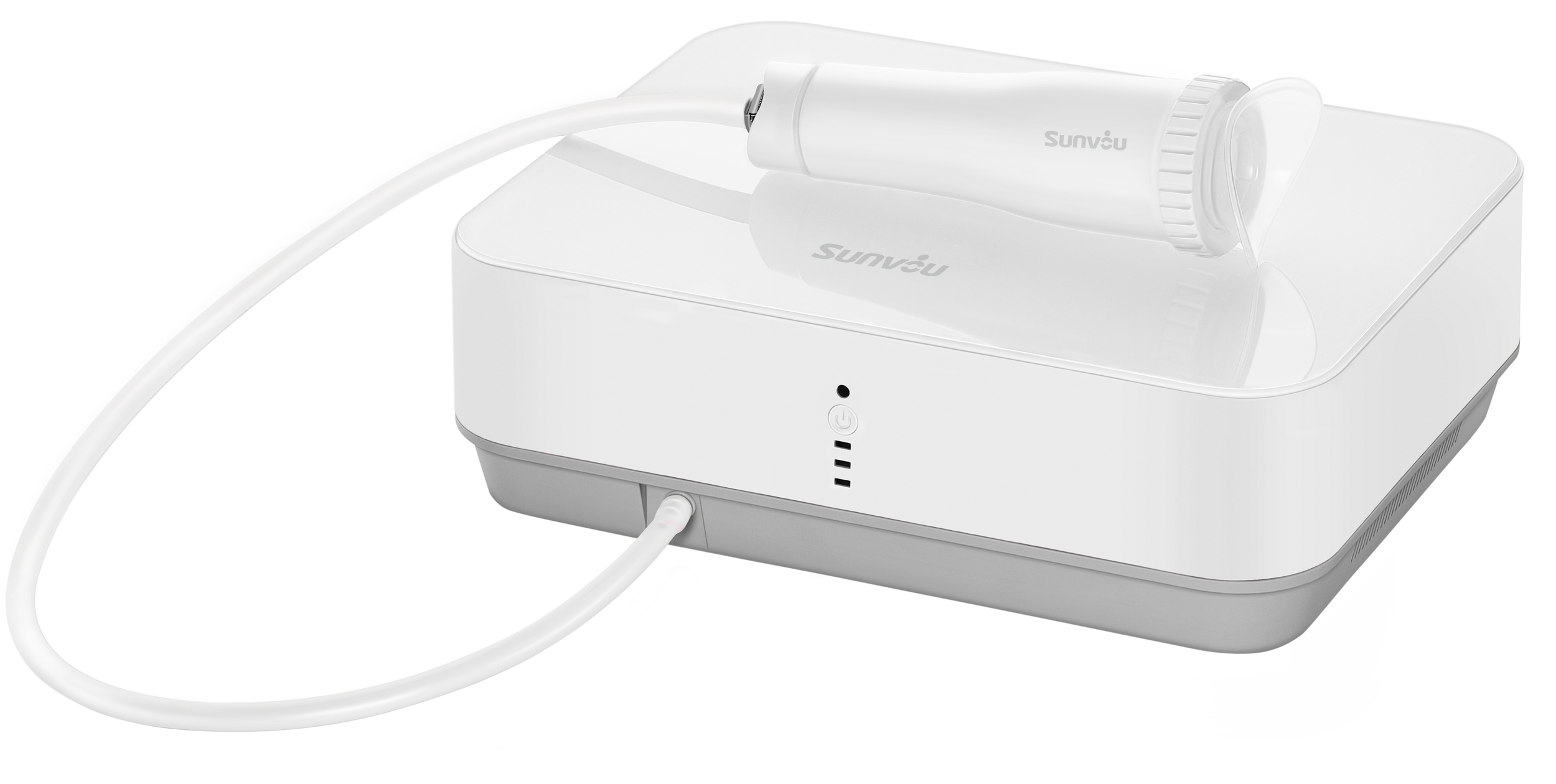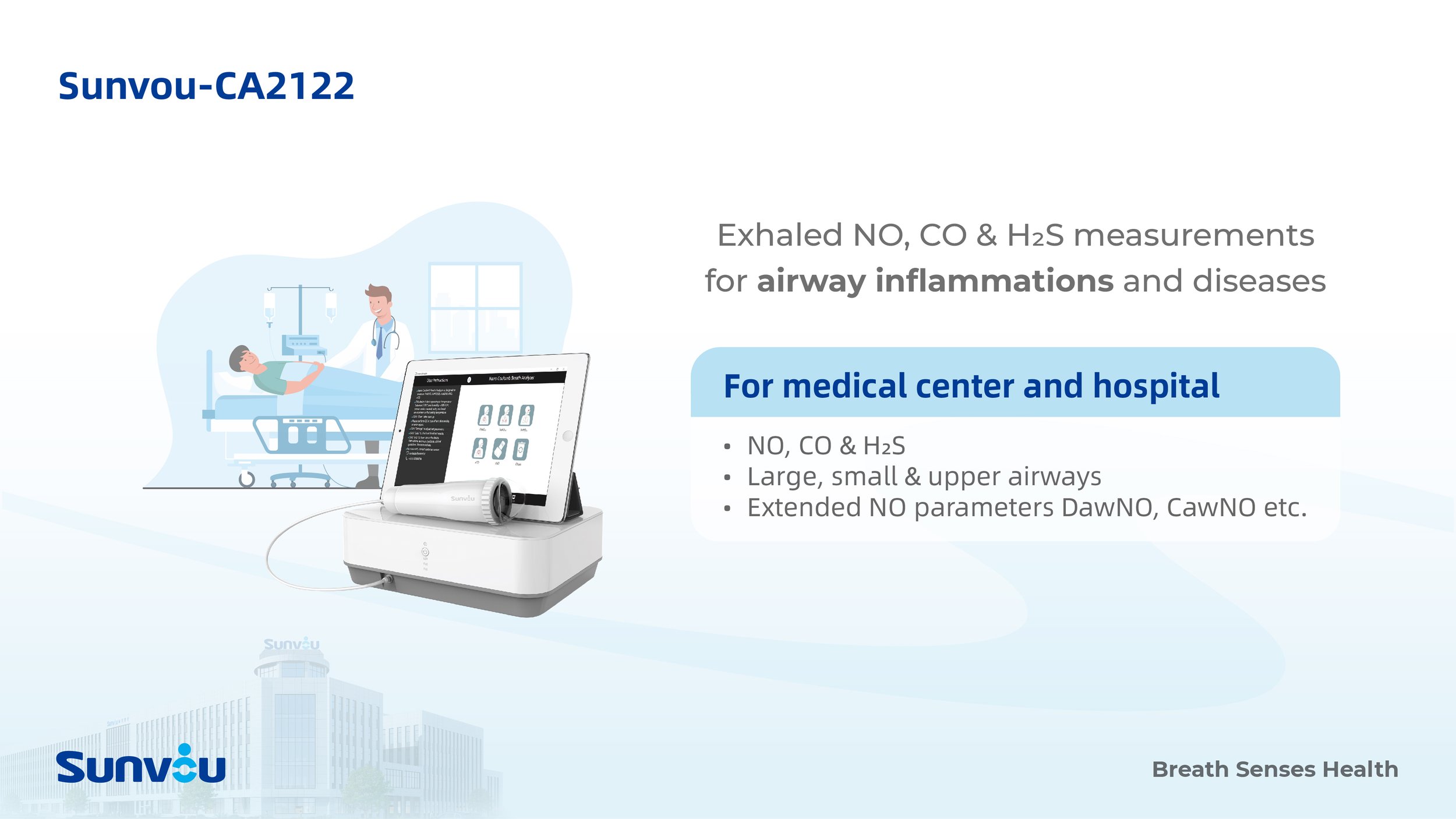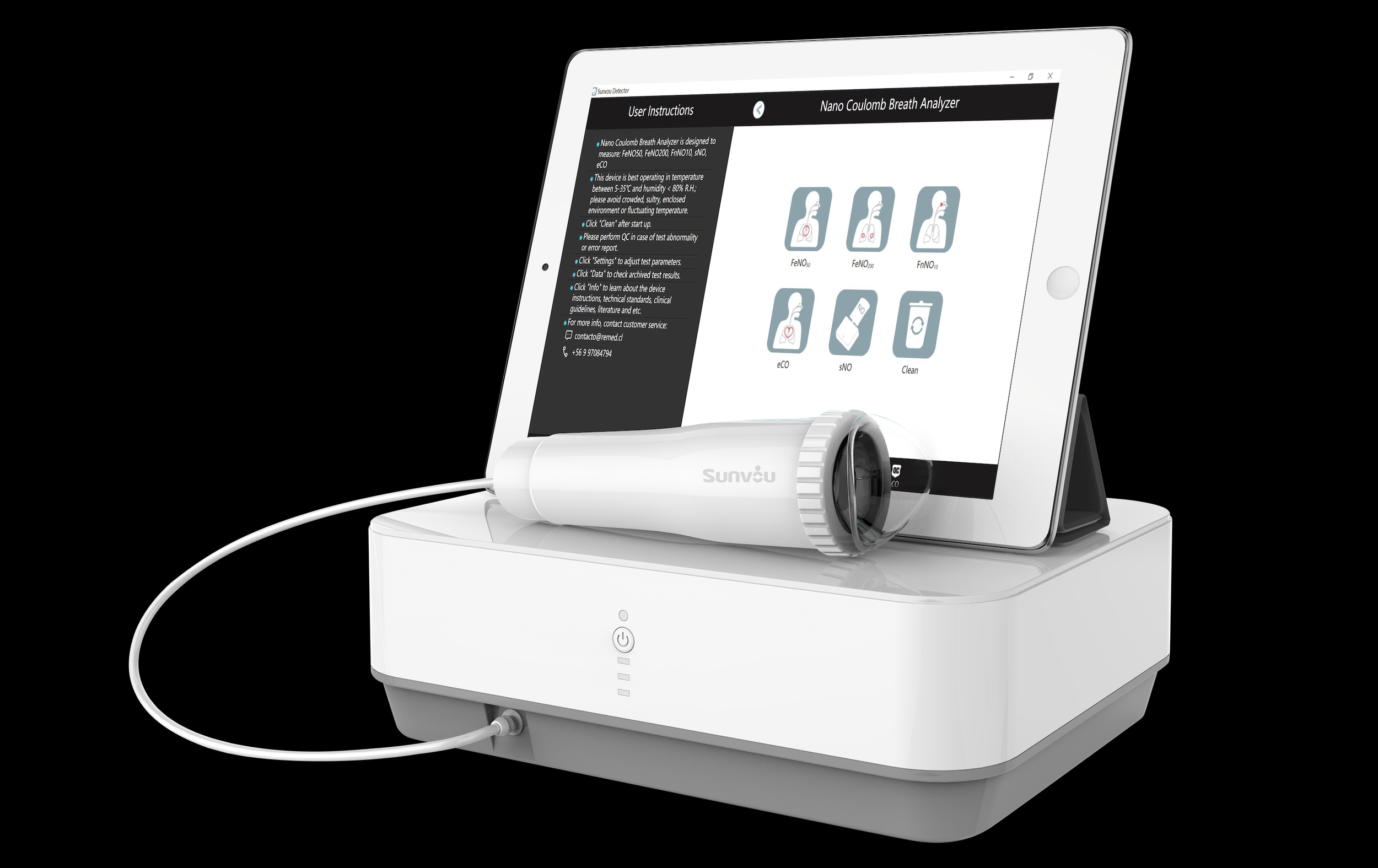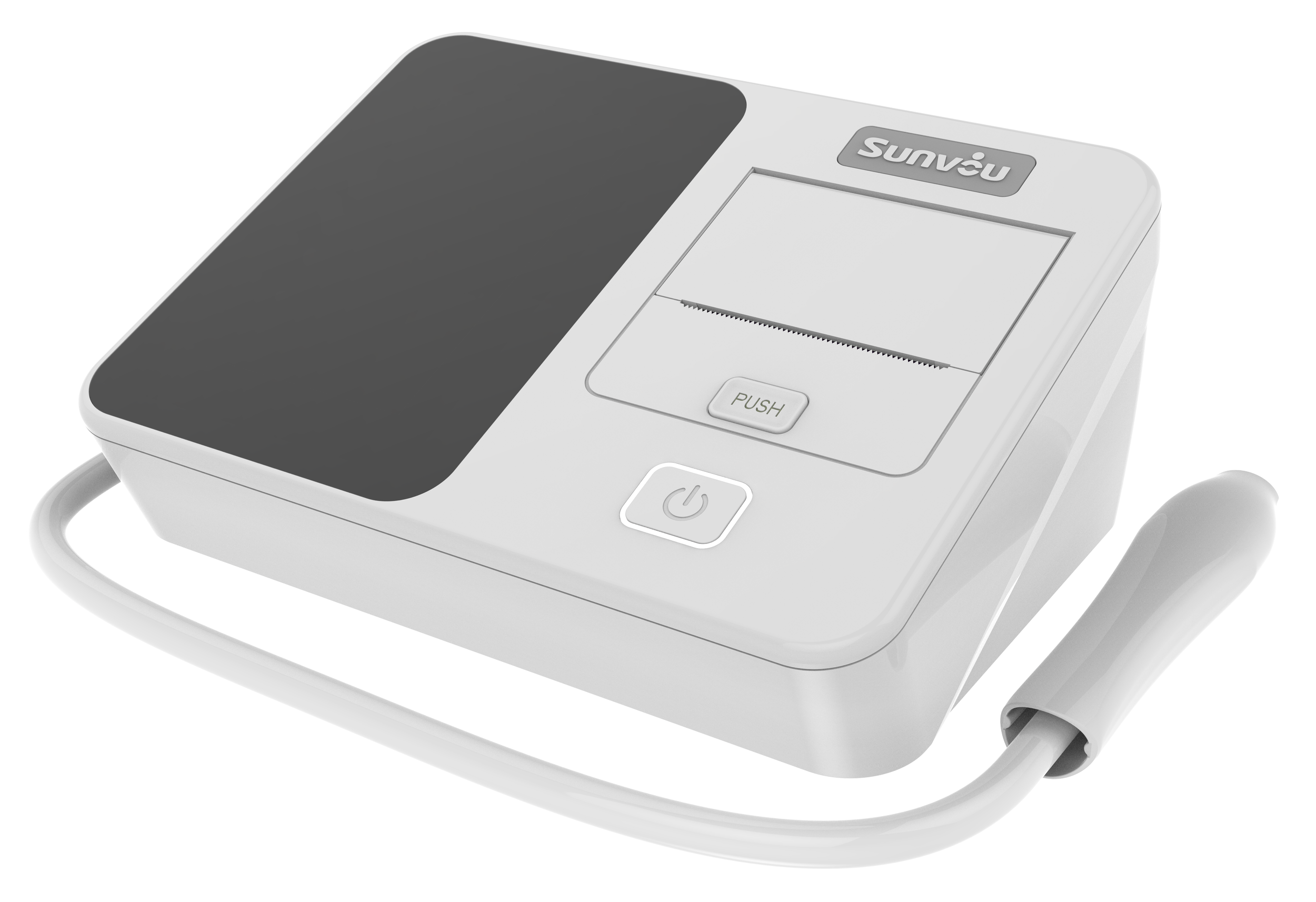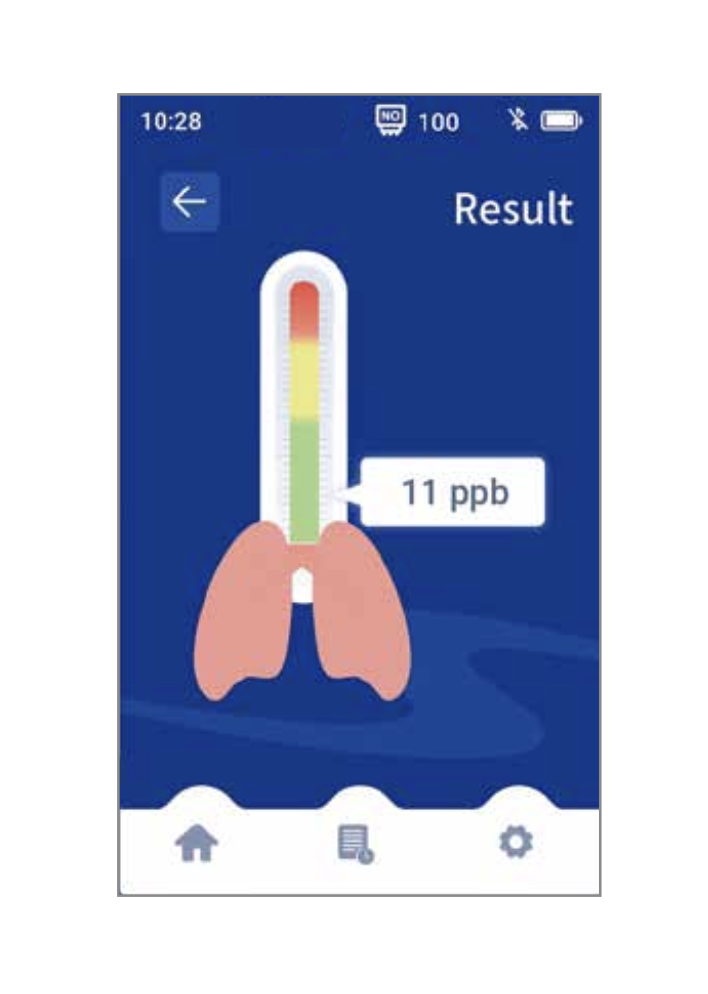Respiratory Breath Analyzers - FeNO Testing
HA1101 Model is sold as Sunvou-TM1100 in some specific countries before April 26, 2029.
FnNO
Fractional Nasal Nitric Oxide
Enzymes that produce nitric oxide (NO) are present in both the nose and paranasal sinuses. NO acts as a powerful bronchodilator and vasodilator, aiding in blood pressure regulation and enhancing the lungs' ability to absorb oxygen.
Cilia move rhythmically to trap dust particles and clear mucus from the airways. If they function improperly, it can result in respiratory issues like coughing or breathing difficulties. A nasal nitric oxide test helps evaluate ciliary function.
PCD: Primary Cilia Dyskinesia Diagnosis with FnNO measurement
In healthy individuals aged 5 and older, nasal nitric oxide (nNO) levels measured during exhalation against mouth resistance typically exceed 250–300 nl/min. Values below 77 nl/min, after excluding cystic fibrosis (CF), are highly indicative of primary ciliary dyskinesia (PCD).
Nasal nitric oxide levels are notably low in primary ciliary dyskinesia (PCD). Measuring this gas is recommended as a diagnostic test for PCD in cooperative patients aged 5 and older.
Low nitric oxide levels in PCD may result from increased consumption by superoxide anions, leading to the formation of reactive nitrogen species. A similar mechanism has been proposed for low nitric oxide levels in adult respiratory distress syndrome.




